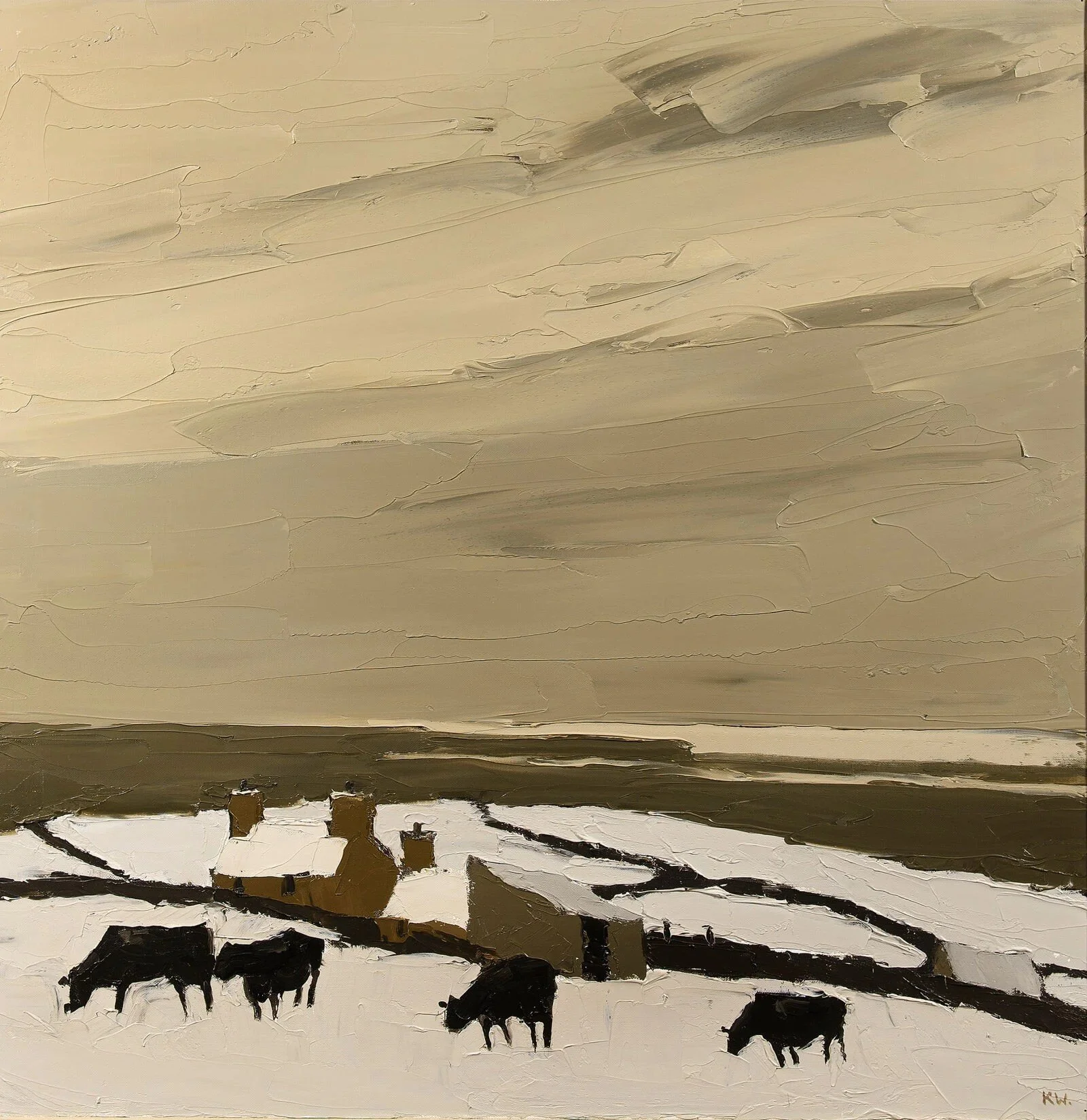Snow at Llangwyfan by Kyffin Williams


Snow at Llangwyfan by Kyffin Williams
Kyffin Williams had a passion for the rugged landscape of North Wales, which we see in this piece depicting a part of the rural village in Llangwyfan, Denbighshire covered in snow. Once determined on an artistic course, Williams’ work was all-consuming and there was never any question as to subject matter, with the landscape before him demanding to be drawn or painted. With his highly distinctive technique these monumental landscapes came to assume an iconic status and so too did the man.
DIMENSIONS: (unframed) 29.9 x 29.9 ins/ 75.9 x 75.9 cm
SIGNATURE: Initialled (lower right)
MEDIUM: Oil on canvas
Price: £75,000
Description
The modern British painter, Sir John ‘Kyffin’ Williams has become widely regarded as the defining artist of Wales during the 20th century, as he is known for his limited colour palette and distinctive painting technique of thick impasto, using a palette-knife, which has now become instantly recognisable.
Williams had a passion for the rugged landscape of North Wales, which we see in this piece depicting a part of the rural village in Llangwyfan, Denbighshire covered in snow. Once determined on an artistic course, Williams’ work was all-consuming and there was never any question as to subject matter, with the landscape before him demanding to be drawn or painted. With his highly distinctive technique these monumental landscapes came to assume an iconic status and so too did the man.
Provenance
Purchased by the parents of the present owner at the Royal Academy, 1986;
Private Collection, United Kingdom
Biography
Born in 1918, in Llangefni on the Isle of Anglesey Williams was brought up in rural Wales surrounded by farmland, with his family having long historic and landowning connections on the island. Williams attended school in Shropshire, first at Moreton Hall and then when his family moved to the countryside of south Caernarvonshire he attended Shrewsbury School.
Upon leaving school at the age of 17, Williams became land agent for Messrs Yale & Hardcastle in Pwllheli which increased his knowledge for the landscape of North Wales, gradually forming the foundations of his future life as a landscape painter. However in 1936 Williams was commissioned into the Territorial Army, joining the 6th Battalion Royal Welsh Fusiliers and being stationed in Northern Ireland until 1941. Although, after having experienced epileptic attacks since joining Williams was summoned to military hospital for tests and diagnosed with epilepsy, consequently declaring him medically unfit for the army.
At this stage, Williams’ doctor recommended he consider taking up art and later that year he enrolled in the Slade School of Art, which was based in the Ashmolean Museum in Oxford during the war. Here Williams discovered on of his great inspirations, the painting by Piero della Francesca, Resurrection in one of the library books. The feeling of intense emotion in the piece and particularly the level of compassion Piero had depicted in the eyes of Christ, excited Williams as he returned to his art studies with a new sense of purpose and direction. In 1943 he won the Slade Portrait Prize and again in 1944 he was awarded the Robert Ross Leaving Scholarship.
Williams then began working as an art master at Highgate School in London, teaching there until 1974 whilst also progressing his own work and style, including through his travels to numerous places over the years, including Italy in 1950, and later on Austria, Paris, Greece, Germany, Holland and in 1968 he was awarded a Travel Fellowship to record the Welsh Community in Patagonia. His first exhibition was at Colnaghi’s in London in 1948 entitled ‘Welsh Landscape Paintings’. He was also much loved by his pupils, and produced some outstanding students, among them fellow RA artist, Anthony Green.
In 1974 Williams was elected as a Royal Academician and in the same year moved back to his native Anglesey where he lived until his death in 2006. Despite his illness making life difficult, he still managed to produce nearly one hundred works a year, as well as teaching and in 1982 he was appointed an OBE, being knighted in 1999.